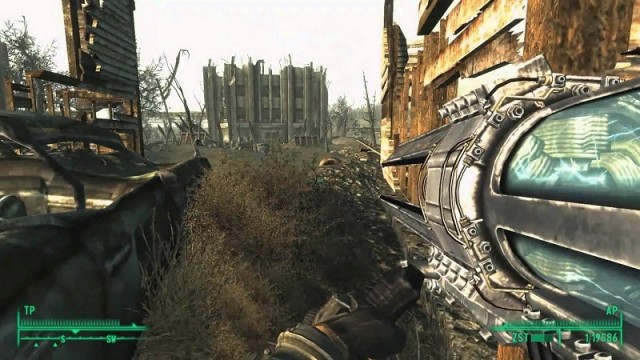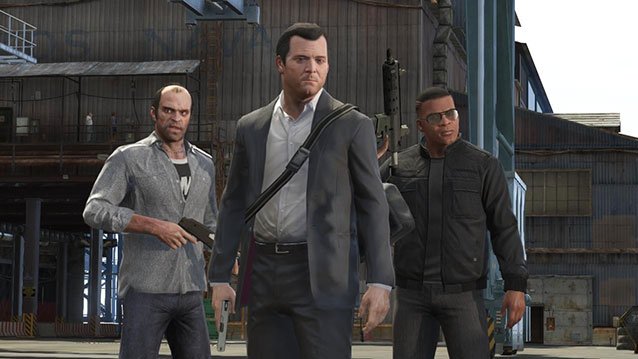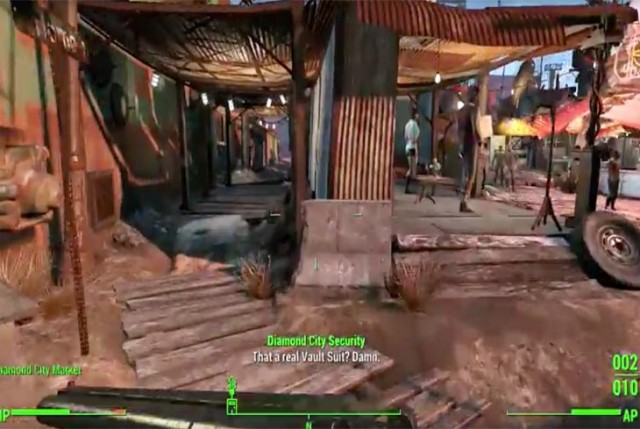

It’s no secret that The Bureau: XCOM Declassified crossed the finish line with the odds stacked against it; key members of the development team came and went since the game – then known simply as XCOM – was revealed back in 2011, before serious – serious – changes were made on fundamental levels, and The Bureau was completed 2K Marin. It once showed particular promise thanks to its 1960s setting and apparent love for the source material, but went under serious revision since.
But while the game’s many disparate elements occasionally hit their notes with admirable enthusiasm, there’s no avoiding the fact that The Bureau fails to succeed in doing what the developers likely set out to achieve.
The obvious truth is that any game which passes from one philosophical design to another, from one team to another, will be less likely to deliver a unified experience. The Bureau proves this at nearly every step of the way, as every well-executed plot beat or mechanic is countered immediately by a feature which needed much more time in the oven.
The game may be flawed, but in terms of the story told to usher players into the earliest days of XCOM, the plot is serviceable. The Bureau doesn’t waste time with scanning and tracking down alien ships; Earth falls under an all-out attack, with communication knocked out across the United States and no one but XCOM equipped to handle the invading forces. That threat leaves little room to build tension, but playing as Agent William Carter as he is inducted into the mysterious force is as good a place to start as any.
Although the 1960s setting of the game is executed surprisingly well – from the destroyed homecoming parades in small town America to the ‘cutting-edge’ designs of the XCOM base – it’s impossible to miss the fact that the game’s worlds are always more contained than they appear, with environments lacking any sense of real meaning or interaction.
Looking back at the story from the game’s closing moments, there’s no question that the core story is one that complements that of XCOM: Enemy Unknown quite well. However, anyone hoping to see some connective tissue between the XCOM of the 1960s seen in The Bureau and that of Firaxis’ strategy title is in for disappointment.
The complete disconnect between the two incarnations of the organization is just one of several large – large – plot holes that the developers seem uninterested in acknowledging. The third is particularly guilty, possessing one of the more thought-provoking and clever twists on the player-avatar relationship we’ve seen in years… with the plot twist accompanying it confusing, to say the least.
Add to these deficiencies the fact that much of the voice acting is at best ‘good enough,’ lacking any of the style or affectation seen in Enemy Unknown, for instance, and the story becomes more of a chore than a source of momentum. The Bureau includes several chances to explore conversation trees with both fellow soldiers and survivors, but the performances are so uniformly monotone – beginning and ending with Carter’s completely wooden voice work – even completionists are likely to cut conversations short out of disinterest.
Once players have accepted that plot holes and underwhelming character development is there to stay, the attention will of course turn to gameplay – the place where The Bureau undeniably shows the most promise, and some of its most problematic drawbacks.
When XCOM was re-branded as The Bureau, one of the least surprising revelations was that the shift from FPS to third-person squad combat was made to more closely resemble Firaxis Games’ wildly successful Enemy Unknown; no surprise, since that game was one of the year’s best (read our review). But while the introduction of squad commands, and an emphasis on cover and flanking may make the core combat of The Bureau resemble that of Enemy Unknown, it’s easy to spot the places where the two genres simply can’t overlap.
The best parts of XCOM:Enemy Unknown – which 2K Marin is clearly attempting to adapt – are the gripping stalemates between a squad of human-controlled soldiers, and an unpredictable cluster of opposing aliens. With the enemy’s next move unknowable, and each of the squad members’ abilities at the player’s disposal, the artifice of an ‘alien invasion’ soon gives way to the core rivalry: the player is seated at one side of a chess board, the game’s AI sitting opposite.
As a result of The Bureau‘s third-person shooter system and enemy AI akin to virtually any attempt emphasizing cover (think Mass Effect 2 or Star Trek), that constant ebb and flow is never present. The enemies behave as any video game baddie would, so the illusion of a give-and-take, back and forth interaction with an intelligent enemy is completely missing; replaced with the distinct feeling that the developers have set the enemies on auto-pilot, and taken their lunch break.
That doesn’t mean that the tools placed at the player’s disposal aren’t well-designed. The squad classes each possess unique abilities – like mines, automated turrets, and even telekinetic attacks (don’t count an explanation) – that offer some unique combat encounters throughout the campaign. The fact that the enemies never stop attacking, only slowing to a crawl when the player is issuing commands to his squadmates adds to the tension, but on most difficulty levels, players are unlikely to feel serious threat of defeat.
The ability to endlessly revive fallen squad mates who, thanks to their occasionally brainless AI behavior leave themselves exposed unless the player regularly instructs them not to be, is just one reason enemy encounters become tasks to complete, not threats to endure. The game’s greatest flaw however, is the fact that acquiring a new weapon, delivering the crushing blow to a boss, or working in unison as a team isn’t made the least bit satisfying.
Where Enemy Unknown‘s developers put the time into making each bullet, laser blast, plasma bolt feel empowering, there’s no such embellishment to be found here.
That might not be a deal-breaker if the sense of tension – the threat of an alien swarm moving just around the next corner, or preparing to encircle your squad and pounce – seen most recently in Enemy Unknown was in the slightest present. As it stands, each and every mission in The Bureau follows the all-too-familiar chain of corridor, shooting arena, corridor, shooting arena that has apparently come to define uninspired shooters. If the player isn’t hunkering down in response to to a newly revealed team of enemies, they’re running to the next one.
With the core experience nowhere near as satisfying or well-polished as it could have been, the only real motivation to continue forward is to get to the next story event, or try to find the elements of the combat system that offer enough enjoyment to stay engaged. That’s certainly enough for other franchises to call their campaign a success, but given the anticipation for The Bureau, and the new promise of the XCOM brand, it’s not enough here.
It’s not the game that casual fans may have been hoping for, but with a story true to the brand, and gameplay that fluctuates from formulaic to ‘flawed but intriguing,’ diehard XCOM fans might find enough to appreciate The Bureau more than its third-person competitors.
_____
The Bureau: XCOM Declassified is available now for PC, PS3 and Xbox 360. Game Rant played the Xbox 360 version for review.
Follow Andrew on Twitter @andrew_dyce.




 Below Preview: With Purpose
Below Preview: With Purpose Why Target Demographics Dont Absolve GTA 5 From Being Morally Dubious
Why Target Demographics Dont Absolve GTA 5 From Being Morally Dubious Fallout 4: Minutemen - When Freedom Calls, The Sight, Taking Independence and Old Guns
Fallout 4: Minutemen - When Freedom Calls, The Sight, Taking Independence and Old Guns Comics: The top 10 Marvel Heroes of 2014
Comics: The top 10 Marvel Heroes of 2014 How to Get 20% Off New Games on Amazon Right Now
How to Get 20% Off New Games on Amazon Right Now